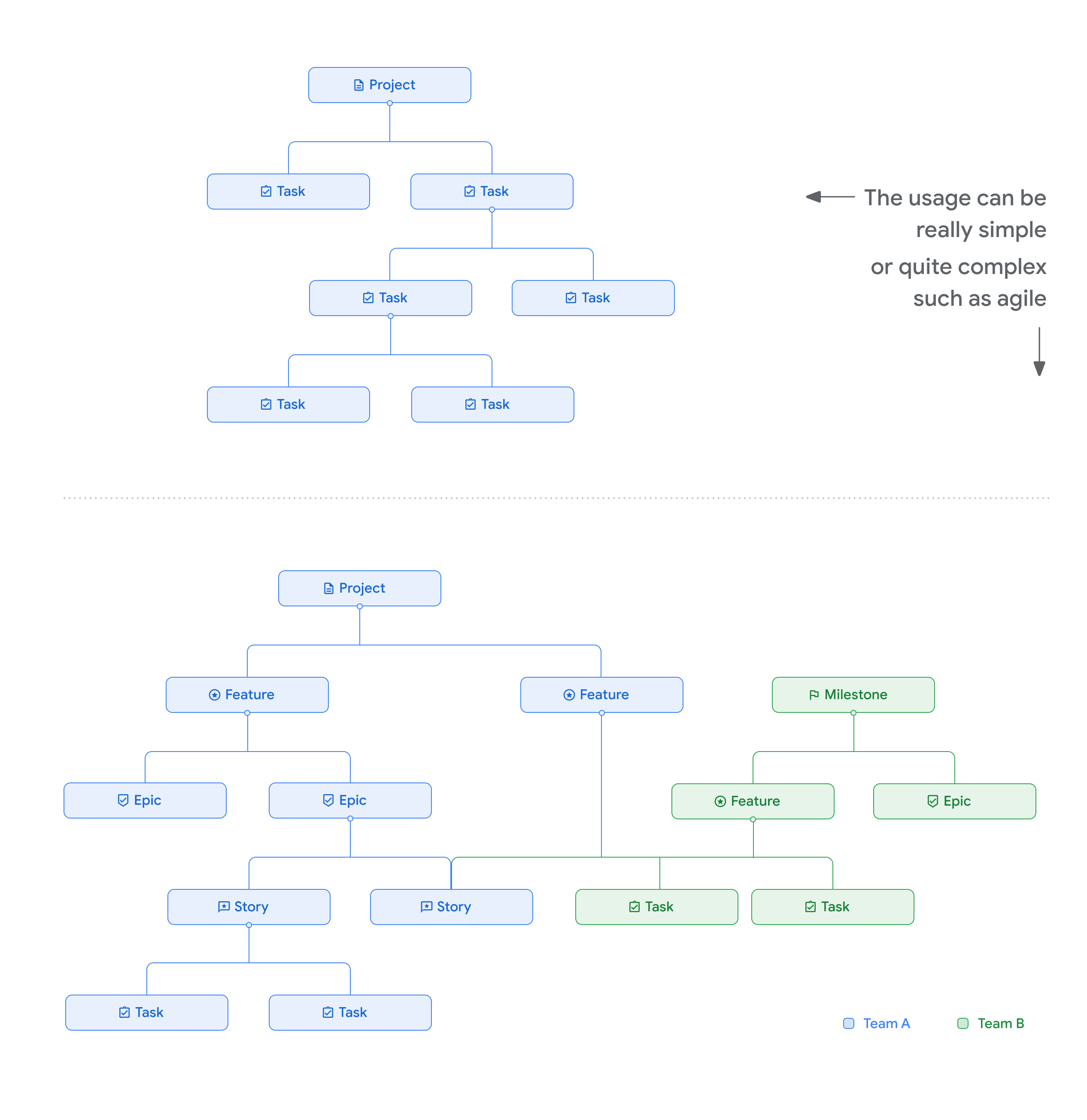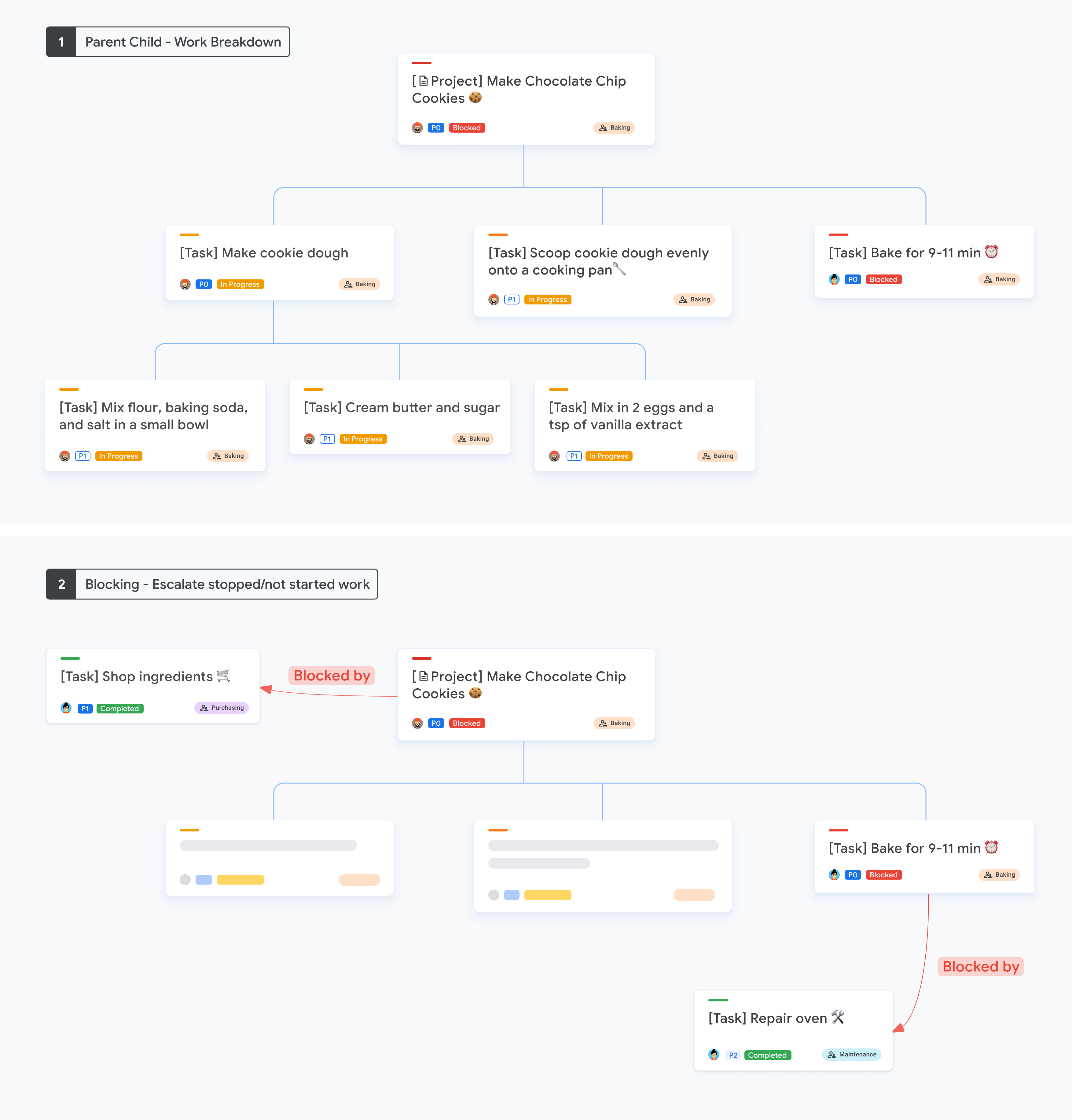上下層關係
Google Issue Tracker 支援上/下層關係。父子關係通常用於表示特定工作中的細項工作。父項可以有許多子項,子項也可以有許多父項。
父子關係具有下列特性:
| 特徵 |
詳細資料 |
| 關係 |
N:N |
| 排序 |
支援在父項中排序子項。 |
| 週期偵測 |
系統會避免循環相依。 |
| 直接子項數量上限 |
500 |
| 最大祖系 |
1000 |
範例
下圖顯示一些父項/子項關係範例。

父項/子項關係和封鎖
使用父子關係時,系統仍支援現有的封鎖和遭封鎖關係。當您將父子關係與封鎖功能結合時:
- 使用父項-子項關係,將工作細分為較小的單位。
- 當時間和順序至關重要,且您想在 UI 中提供明確指示,以便升級已停止或尚未開始的工作時,請使用 blocking 和 blocked by。
下圖顯示父子項和阻斷工作細目。

保留所有權利。Java 是 Oracle 和/或其關聯企業的註冊商標。
上次更新時間:2025-02-05 (世界標準時間)。
[null,null,["上次更新時間:2025-02-05 (世界標準時間)。"],[[["Google Issue Tracker enables the creation of parent-child relationships to represent the hierarchical breakdown of work within a project."],["Issues can have multiple parents and children, but the system prevents circular dependencies and limits the number of direct children to 500 and total ancestors to 1000."],["While parent-child relationships are ideal for structuring tasks, \"Blocking\" and \"Blocked by\" relationships should be used to indicate critical timing and sequencing dependencies."],["Users are encouraged to leverage both relationship types to manage work effectively, using parent-child for work breakdown and blocking for highlighting time-sensitive dependencies."]]],[]]
![]()
![]()
